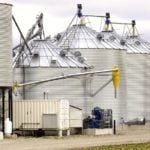Residents of rural Ontario are creating new energy efficient solutions, whether or not government is involved. Farmers, rural residents and planners talked about rural environmental sustainability at the recent Rural […] Read more
Tag Archives electricity

Debating rural energy efficiency
Alternative energy users discuss how local solutions can be good for rural economies

Ontario axes Green Energy Act, leaving some wondering what’s next
South West Oxford mayor suggests that storage continues to be the biggest stumbling block to allowing the renewable energy sector to continue growing without government support
In a widely anticipated move, the Ontario government has repealed the province’s Green Energy Act. Why it matters: Since the Green Energy Act was introduced in 2009, thousands of Ontario […] Read more

Renewables can help reduce electricity costs — in some cases
For producers with less seasonally-concentrated energy demands and easier access to higher-demand grid infrastructure, renewable energy technologies like solar panels and biodigestors can significantly reduce or eliminate energy costs. Small […] Read more

Getting a jump on the power grid
Expensive electricity and inflexible utilities mean more farmers are generating their own power on the farm
Grain drying is a necessary and expensive evil for Ontario farmers. It’s so expensive, in fact, that grain producers are increasingly offsetting their electricity expenses with on-farm, off-grid energy production […] Read more

Ontario power utilities offer farm water pump rebate
Ontario farmers buying certain types of high-efficiency water pumping systems for irrigation, horticulture or stock watering could now be up for rebates. Hydro One and Niagara Peninsula Energy (NPEI) on […] Read more

Is GreenON for you?
The new energy efficiency program for barns, greenhouses and grain dryers has a quick first intake period
A new program to help fund energy efficiency improvements in enclosed agriculture buildings has been launched, but the timeline for the first intake is short. Applications are now being accepted […] Read more

Start with easy steps to control electricity costs on farms
Farmers looking to take control of their energy costs have to start with knowing what electricity or gas they use and where. The answer may surprise them. Why it matters: Electricity […] Read more

Ontario budget seeks tax flexibility for on-farm processing
The Ontario government has balanced its budget for the first time in since 2008 — but Thursday’s budget contained little news for agriculture and rural Ontario. Finance Minister Charles Sousa’s […] Read more

Ontario greenhouse growers get competitiveness fund
The Ontario government is putting $19 million into a new initiative to support the competitiveness of the greenhouse sector in the province. Provincial Agriculture Minister Jeff Leal announced the funding […] Read more

N.S. halts local-level biomass, wind power plan
Nova Scotia is ending its feed-in tariff program that pays local-level groups to generate power from biomass, wind and other renewable sources. Energy Minister Michel Samson said Thursday a provincial […] Read more
